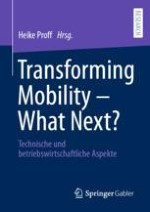2022 | OriginalPaper | Buchkapitel
20. Connected Traffic Systems Based on Referenced Landmarks as Part of Conventional Road Infrastructure
verfasst von : Alexander Jäggle, Marcel Voßhans, Michael Probst, Nils Mursinsky, Andre Vaskevic, Tobias Heisig, Reiner Marchthaler, Ralf Wörner
Erschienen in: Transforming Mobility – What Next?
Verlag: Springer Fachmedien Wiesbaden
Aktivieren Sie unsere intelligente Suche, um passende Fachinhalte oder Patente zu finden.
Wählen Sie Textabschnitte aus um mit Künstlicher Intelligenz passenden Patente zu finden. powered by
Markieren Sie Textabschnitte, um KI-gestützt weitere passende Inhalte zu finden. powered by
